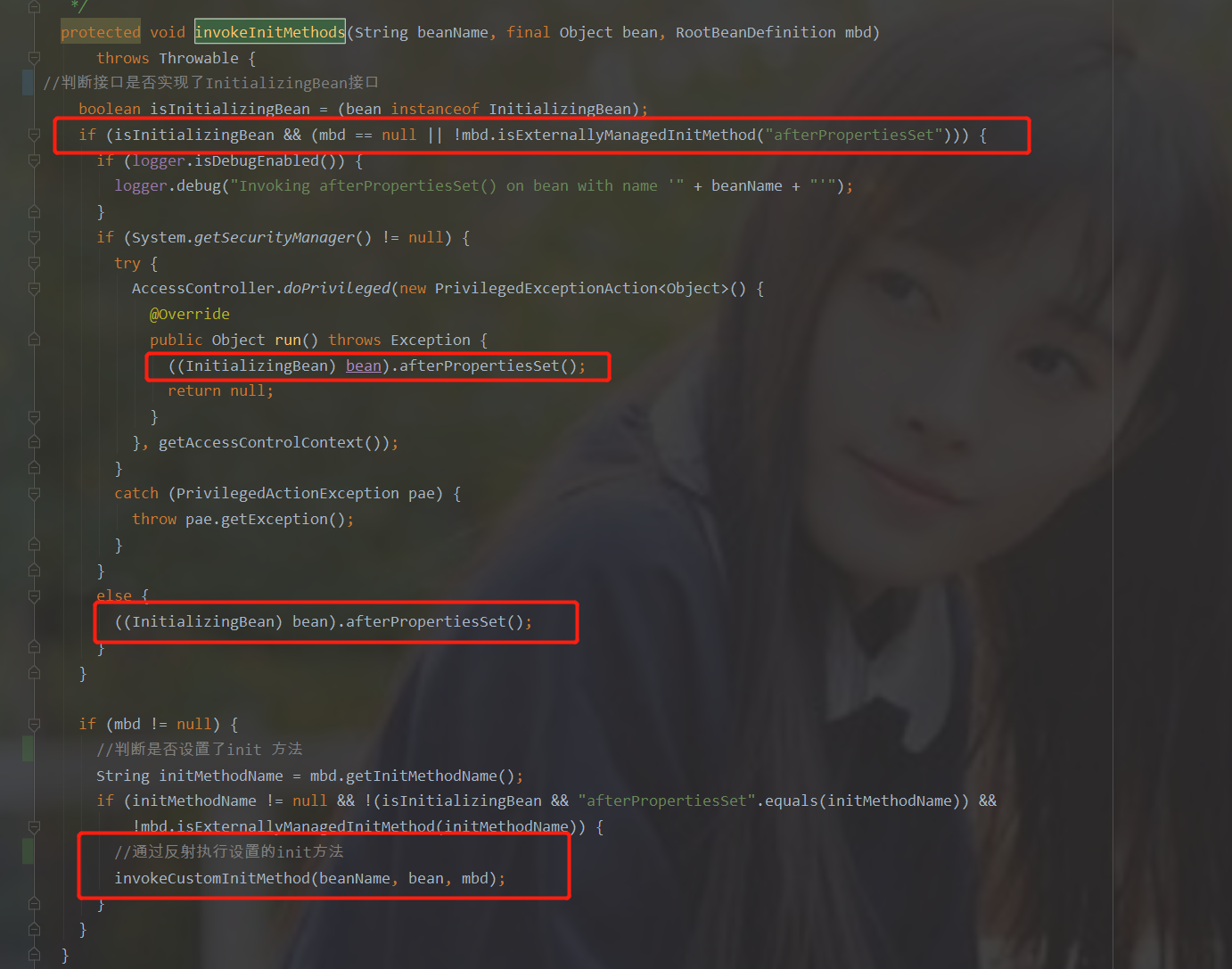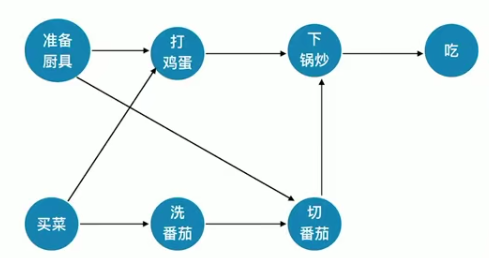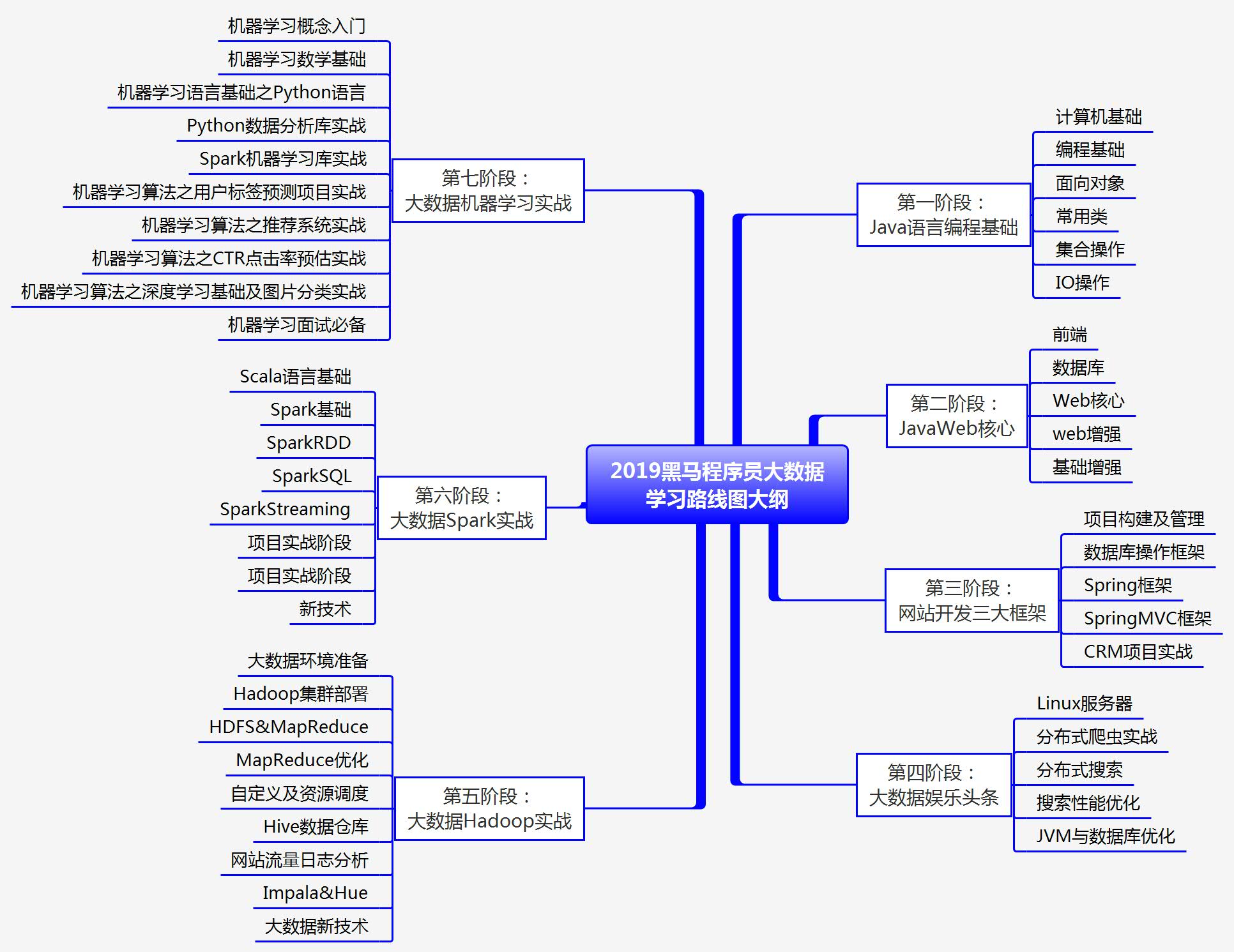ElasticSearch 23 种映射参数详解
文章目录
- 1.ElasticSearch 映射参数
- 1.1 analyzer
- 1.2 search_analyzer
- 1.3 normalizer
- 1.4 boost
- 1.5 coerce
- 1.6 copy_to
- 1.7 doc_values 和 fielddata
- 1.8 dynamic
- 1.9 enabled
- 1.10 format
- 1.11 ignore_above
- 1.12 ignore_malformed
- 1.13 include_in_all
- 1.14 index
- 1.15 index_options
- 1.16 norms
- 1.17 null_value
- 1.18 position_increment_gap
- 1.19 properties
- 1.20 similarity
- 1.21 store
- 1.22 term_vectors
- 1.23 fields
ElasticSearch 系列教程我们前面已经连着发了四篇了,今天第五篇,我们来聊一聊 Es 中的 23 种常见的映射参数。
针对这 23 种常见的映射参数,松哥专门录制了一个视频教程:

视频链接: https://pan.baidu.com/s/1J23m6oSTeZJU6j6KaogZSg 提取码: 6k2a
本文是松哥所录视频教程的一个笔记,笔记简明扼要,完整内容小伙伴们可以参考视频。
1.ElasticSearch 映射参数
1.1 analyzer
定义文本字段的分词器。默认对索引和查询都是有效的。
假设不用分词器,我们先来看一下索引的结果,创建一个索引并添加一个文档:
PUT blogPUT blog/_doc/1{"title":"定义文本字段的分词器。默认对索引和查询都是有效的。"}
查看词条向量(term vectors)
GET blog/_termvectors/1{"fields": ["title"]}
查看结果如下:
{"_index" : "blog","_type" : "_doc","_id" : "1","_version" : 1,"found" : true,"took" : 0,"term_vectors" : {"title" : {"field_statistics" : {"sum_doc_freq" : 22,"doc_count" : 1,"sum_ttf" : 23},"terms" : {"义" : {"term_freq" : 1,"tokens" : [{"position" : 1,"start_offset" : 1,"end_offset" : 2}]},"分" : {"term_freq" : 1,"tokens" : [{"position" : 7,"start_offset" : 7,"end_offset" : 8}]},"和" : {"term_freq" : 1,"tokens" : [{"position" : 15,"start_offset" : 16,"end_offset" : 17}]},"器" : {"term_freq" : 1,"tokens" : [{"position" : 9,"start_offset" : 9,"end_offset" : 10}]},"字" : {"term_freq" : 1,"tokens" : [{"position" : 4,"start_offset" : 4,"end_offset" : 5}]},"定" : {"term_freq" : 1,"tokens" : [{"position" : 0,"start_offset" : 0,"end_offset" : 1}]},"对" : {"term_freq" : 1,"tokens" : [{"position" : 12,"start_offset" : 13,"end_offset" : 14}]},"引" : {"term_freq" : 1,"tokens" : [{"position" : 14,"start_offset" : 15,"end_offset" : 16}]},"效" : {"term_freq" : 1,"tokens" : [{"position" : 21,"start_offset" : 22,"end_offset" : 23}]},"文" : {"term_freq" : 1,"tokens" : [{"position" : 2,"start_offset" : 2,"end_offset" : 3}]},"是" : {"term_freq" : 1,"tokens" : [{"position" : 19,"start_offset" : 20,"end_offset" : 21}]},"有" : {"term_freq" : 1,"tokens" : [{"position" : 20,"start_offset" : 21,"end_offset" : 22}]},"本" : {"term_freq" : 1,"tokens" : [{"position" : 3,"start_offset" : 3,"end_offset" : 4}]},"查" : {"term_freq" : 1,"tokens" : [{"position" : 16,"start_offset" : 17,"end_offset" : 18}]},"段" : {"term_freq" : 1,"tokens" : [{"position" : 5,"start_offset" : 5,"end_offset" : 6}]},"的" : {"term_freq" : 2,"tokens" : [{"position" : 6,"start_offset" : 6,"end_offset" : 7},{"position" : 22,"start_offset" : 23,"end_offset" : 24}]},"索" : {"term_freq" : 1,"tokens" : [{"position" : 13,"start_offset" : 14,"end_offset" : 15}]},"认" : {"term_freq" : 1,"tokens" : [{"position" : 11,"start_offset" : 12,"end_offset" : 13}]},"词" : {"term_freq" : 1,"tokens" : [{"position" : 8,"start_offset" : 8,"end_offset" : 9}]},"询" : {"term_freq" : 1,"tokens" : [{"position" : 17,"start_offset" : 18,"end_offset" : 19}]},"都" : {"term_freq" : 1,"tokens" : [{"position" : 18,"start_offset" : 19,"end_offset" : 20}]},"默" : {"term_freq" : 1,"tokens" : [{"position" : 10,"start_offset" : 11,"end_offset" : 12}]}}}}}
可以看到,默认情况下,中文就是一个字一个字的分,这种分词方式没有任何意义。如果这样分词,查询就只能按照一个字一个字来查,像下面这样:
GET blog/_search{"query": {"term": {"title": "定"}}}
无意义!!!
所以,我们要根据实际情况,配置合适的分词器。
给字段设定分词器:
PUT blog{"mappings": {"properties": {"title":{"type":"text","analyzer": "ik_smart"}}}}
存储文档:
PUT blog/_doc/1{"title":"定义文本字段的分词器。默认对索引和查询都是有效的。"}
查看词条向量:
GET blog/_termvectors/1{"fields": ["title"]}
查询结果如下:
{"_index" : "blog","_type" : "_doc","_id" : "1","_version" : 1,"found" : true,"took" : 1,"term_vectors" : {"title" : {"field_statistics" : {"sum_doc_freq" : 12,"doc_count" : 1,"sum_ttf" : 13},"terms" : {"分词器" : {"term_freq" : 1,"tokens" : [{"position" : 4,"start_offset" : 7,"end_offset" : 10}]},"和" : {"term_freq" : 1,"tokens" : [{"position" : 8,"start_offset" : 16,"end_offset" : 17}]},"字段" : {"term_freq" : 1,"tokens" : [{"position" : 2,"start_offset" : 4,"end_offset" : 6}]},"定义" : {"term_freq" : 1,"tokens" : [{"position" : 0,"start_offset" : 0,"end_offset" : 2}]},"对" : {"term_freq" : 1,"tokens" : [{"position" : 6,"start_offset" : 13,"end_offset" : 14}]},"文本" : {"term_freq" : 1,"tokens" : [{"position" : 1,"start_offset" : 2,"end_offset" : 4}]},"有效" : {"term_freq" : 1,"tokens" : [{"position" : 11,"start_offset" : 21,"end_offset" : 23}]},"查询" : {"term_freq" : 1,"tokens" : [{"position" : 9,"start_offset" : 17,"end_offset" : 19}]},"的" : {"term_freq" : 2,"tokens" : [{"position" : 3,"start_offset" : 6,"end_offset" : 7},{"position" : 12,"start_offset" : 23,"end_offset" : 24}]},"索引" : {"term_freq" : 1,"tokens" : [{"position" : 7,"start_offset" : 14,"end_offset" : 16}]},"都是" : {"term_freq" : 1,"tokens" : [{"position" : 10,"start_offset" : 19,"end_offset" : 21}]},"默认" : {"term_freq" : 1,"tokens" : [{"position" : 5,"start_offset" : 11,"end_offset" : 13}]}}}}}
然后就可以通过词去搜索了:
GET blog/_search{"query": {"term": {"title": "索引"}}}
1.2 search_analyzer
查询时候的分词器。默认情况下,如果没有配置 search_analyzer,则查询时,首先查看有没有 search_analyzer,有的话,就用 search_analyzer 来进行分词,如果没有,则看有没有 analyzer,如果有,则用 analyzer 来进行分词,否则使用 es 默认的分词器。
1.3 normalizer
normalizer 参数用于解析前(索引或者查询)的标准化配置。
比如,在 es 中,对于一些我们不想切分的字符串,我们通常会将其设置为 keyword,搜索时候也是使用整个词进行搜索。如果在索引前没有做好数据清洗,导致大小写不一致,例如 javaboy 和 JAVABOY,此时,我们就可以使用 normalizer 在索引之前以及查询之前进行文档的标准化。
先来一个反例,创建一个名为 blog 的索引,设置 author 字段类型为 keyword:
PUT blog{"mappings": {"properties": {"author":{"type": "keyword"}}}}
添加两个文档:
PUT blog/_doc/1{"author":"javaboy"}PUT blog/_doc/2{"author":"JAVABOY"}
然后进行搜索:
GET blog/_search{"query": {"term": {"author": "JAVABOY"}}}
大写关键字可以搜到大写的文档,小写关键字可以搜到小写的文档。
如果使用了 normalizer,可以在索引和查询时,分别对文档进行预处理。
normalizer 定义方式如下:
PUT blog{"settings": {"analysis": {"normalizer":{"my_normalizer":{"type":"custom","filter":["lowercase"]}}}},"mappings": {"properties": {"author":{"type": "keyword","normalizer":"my_normalizer"}}}}
在 settings 中定义 normalizer,然后在 mappings 中引用。
测试方式和前面一致。此时查询的时候,大写关键字也可以查询到小写文档,因为无论是索引还是查询,都会将大写转为小写。
1.4 boost
boost 参数可以设置字段的权重。
boost 有两种使用思路,一种就是在定义 mappings 的时候使用,在指定字段类型时使用;另一种就是在查询时使用。
实际开发中建议使用后者,前者有问题:如果不重新索引文档,权重无法修改。
mapping 中使用 boost(不推荐):
PUT blog{"mappings": {"properties": {"content":{"type": "text","boost": 2}}}}
另一种方式就是在查询的时候,指定 boost
GET blog/_search{"query": {"match": {"content": {"query": "你好","boost": 2}}}}
1.5 coerce
coerce 用来清除脏数据,默认为 true。
例如一个数字,在 JSON 中,用户可能写错了:
{"age":"99"}
或者 :
{"age":"99.0"}
这些都不是正确的数字格式。
通过 coerce 可以解决该问题。
默认情况下,以下操作没问题,就是 coerce 起作用:
PUT blog{"mappings": {"properties": {"age":{"type": "integer"}}}}POST blog/_doc{"age":"99.0"}
如果需要修改 coerce ,方式如下:
PUT blog{"mappings": {"properties": {"age":{"type": "integer","coerce": false}}}}POST blog/_doc{"age":99}
当 coerce 修改为 false 之后,数字就只能是数字了,不可以是字符串,该字段传入字符串会报错。
1.6 copy_to
这个属性,可以将多个字段的值,复制到同一个字段中。
定义方式如下:
PUT blog{"mappings": {"properties": {"title":{"type": "text","copy_to": "full_content"},"content":{"type": "text","copy_to": "full_content"},"full_content":{"type": "text"}}}}PUT blog/_doc/1{"title":"你好江南一点雨","content":"当 coerce 修改为 false 之后,数字就只能是数字了,不可以是字符串,该字段传入字符串会报错。"}GET blog/_search{"query": {"term": {"full_content": "当"}}}
1.7 doc_values 和 fielddata
es 中的搜索主要是用到倒排索引,doc_values 参数是为了加快排序、聚合操作而生的。当建立倒排索引的时候,会额外增加列式存储映射。
doc_values 默认是开启的,如果确定某个字段不需要排序或者不需要聚合,那么可以关闭 doc_values。
大部分的字段在索引时都会生成 doc_values,除了 text。text 字段在查询时会生成一个 fielddata 的数据结构,fieldata 在字段首次被聚合、排序的时候生成。
| doc_values | fielddata |
|---|---|
| 索引时创建 | 使用时动态创建 |
| 磁盘 | 内存 |
| 不占用内存 | 不占用磁盘 |
| 索引速度稍微低一点 | 文档很多时,动态创建慢,占内存 |
doc_values 默认开启,fielddata 默认关闭。
doc_values 演示:
PUT usersPUT users/_doc/1{"age":100}PUT users/_doc/2{"age":99}PUT users/_doc/3{"age":98}PUT users/_doc/4{"age":101}GET users/_search{"query": {"match_all": {}},"sort":[{"age":{"order": "desc"}}]}
由于 doc_values 默认时开启的,所以可以直接使用该字段排序,如果想关闭 doc_values ,如下:
PUT users{"mappings": {"properties": {"age":{"type": "integer","doc_values": false}}}}PUT users/_doc/1{"age":100}PUT users/_doc/2{"age":99}PUT users/_doc/3{"age":98}PUT users/_doc/4{"age":101}GET users/_search{"query": {"match_all": {}},"sort":[{"age":{"order": "desc"}}]}
1.8 dynamic
1.9 enabled
es 默认会索引所有的字段,但是有的字段可能只需要存储,不需要索引。此时可以通过 enabled 字段来控制:
PUT blog{"mappings": {"properties": {"title":{"enabled": false}}}}PUT blog/_doc/1{"title":"javaboy"}GET blog/_search{"query": {"term": {"title": "javaboy"}}}
设置了 enabled 为 false 之后,就可以再通过该字段进行搜索了。
1.10 format
日期格式。format 可以规范日期格式,而且一次可以定义多个 format。
PUT users{"mappings": {"properties": {"birthday":{"type": "date","format": "yyyy-MM-dd||yyyy-MM-dd HH:mm:ss"}}}}PUT users/_doc/1{"birthday":"2020-11-11"}PUT users/_doc/2{"birthday":"2020-11-11 11:11:11"}
- 多个日期格式之间,使用 || 符号连接,注意没有空格。
- 如果用户没有指定日期的 format,默认的日期格式是
strict_date_optional_time||epoch_mills
另外,所有的日期格式,可以在 https://www.elastic.co/guide/en/elasticsearch/reference/current/mapping-date-format.html 网址查看。
1.11 ignore_above
igbore_above 用于指定分词和索引的字符串最大长度,超过最大长度的话,该字段将不会被索引,这个字段只适用于 keyword 类型。
PUT blog{"mappings": {"properties": {"title":{"type": "keyword","ignore_above": 10}}}}PUT blog/_doc/1{"title":"javaboy"}PUT blog/_doc/2{"title":"javaboyjavaboyjavaboy"}GET blog/_search{"query": {"term": {"title": "javaboyjavaboyjavaboy"}}}
1.12 ignore_malformed
ignore_malformed 可以忽略不规则的数据,该参数默认为 false。
PUT users{"mappings": {"properties": {"birthday":{"type": "date","format": "yyyy-MM-dd||yyyy-MM-dd HH:mm:ss"},"age":{"type": "integer","ignore_malformed": true}}}}PUT users/_doc/1{"birthday":"2020-11-11","age":99}PUT users/_doc/2{"birthday":"2020-11-11 11:11:11","age":"abc"}PUT users/_doc/2{"birthday":"2020-11-11 11:11:11aaa","age":"abc"}
1.13 include_in_all
这个是针对 _all 字段的,但是在 es7 中,该字段已经被废弃了。
1.14 index
index 属性指定一个字段是否被索引,该属性为 true 表示字段被索引,false 表示字段不被索引。
PUT users{"mappings": {"properties": {"age":{"type": "integer","index": false}}}}PUT users/_doc/1{"age":99}GET users/_search{"query": {"term": {"age": 99}}}
- 如果 index 为 false,则不能通过对应的字段搜索。
1.15 index_options
index_options 控制索引时哪些信息被存储到倒排索引中(用在 text 字段中),有四种取值:
| index_options | 备注 |
|---|---|
| docs | 只存储文档编号,默认即此 |
| freqs | 在 docs 基础上,存储词项频率 |
| positions | 在 freqs 基础上,存储词项偏移位置 |
| offsets | 在 positions 基础上,存储词项开始和结束的字符位置 |
1.16 norms
norms 对字段评分有用,text 默认开启 norms,如果不是特别需要,不要开启 norms。
1.17 null_value
在 es 中,值为 null 的字段不索引也不可以被搜索,null_value 可以让值为 null 的字段显式的可索引、可搜索:
PUT users{"mappings": {"properties": {"name":{"type": "keyword","null_value": "javaboy_null"}}}}PUT users/_doc/1{"name":null,"age":99}GET users/_search{"query": {"term": {"name": "javaboy_null"}}}
1.18 position_increment_gap
被解析的 text 字段会将 term 的位置考虑进去,目的是为了支持近似查询和短语查询,当我们去索引一个含有多个值的 text 字段时,会在各个值之间添加一个假想的空间,将值隔开,这样就可以有效避免一些无意义的短语匹配,间隙大小通过 position_increment_gap 来控制,默认是 100。
PUT usersPUT users/_doc/1{"name":["zhang san","li si"]}GET users/_search{"query": {"match_phrase": {"name": {"query": "sanli"}}}}
sanli搜索不到,因为两个短语之间有一个假想的空隙,为 100。GET users/_search
{
“query”: {"match_phrase": {"name": {"query": "san li","slop": 101}}
}
}
可以通过 slop 指定空隙大小。
也可以在定义索引的时候,指定空隙:
PUT users{"mappings": {"properties": {"name":{"type": "text","position_increment_gap": 0}}}}PUT users/_doc/1{"name":["zhang san","li si"]}GET users/_search{"query": {"match_phrase": {"name": {"query": "san li"}}}}
1.19 properties
1.20 similarity
similarity 指定文档的评分模型,默认有三种:
| similarity | 备注 |
|---|---|
| BM25 | es 和 lucene 默认的评分模型 |
| classic | TF/IDF 评分 |
| boolean | boolean 模型评分 |
1.21 store
默认情况下,字段会被索引,也可以搜索,但是不会存储,虽然不会被存储的,但是 _source 中有一个字段的备份。如果想将字段存储下来,可以通过配置 store 来实现。
1.22 term_vectors
term_vectors 是通过分词器产生的信息,包括:
- 一组 terms
- 每个 term 的位置
- term 的首字符/尾字符与原始字符串原点的偏移量
term_vectors 取值:
| 取值 | 备注 |
|---|---|
| no | 不存储信息,默认即此 |
| yes | term 被存储 |
| with_positions | 在 yes 的基础上增加位置信息 |
| with_offset | 在 yes 的基础上增加偏移信息 |
| with_positions_offsets | term、位置、偏移量都存储 |
1.23 fields
fields 参数可以让同一字段有多种不同的索引方式。例如:
PUT blog{"mappings": {"properties": {"title":{"type": "text","fields": {"raw":{"type":"keyword"}}}}}}PUT blog/_doc/1{"title":"javaboy"}GET blog/_search{"query": {"term": {"title.raw": "javaboy"}}}
- https://www.elastic.co/guide/en/elasticsearch/reference/current/mapping-params.html
最后,松哥还搜集了 50+ 个项目需求文档,想做个项目练练手的小伙伴不妨看看哦~



需求文档地址:https://github.com/lenve/javadoc



































还没有评论,来说两句吧...